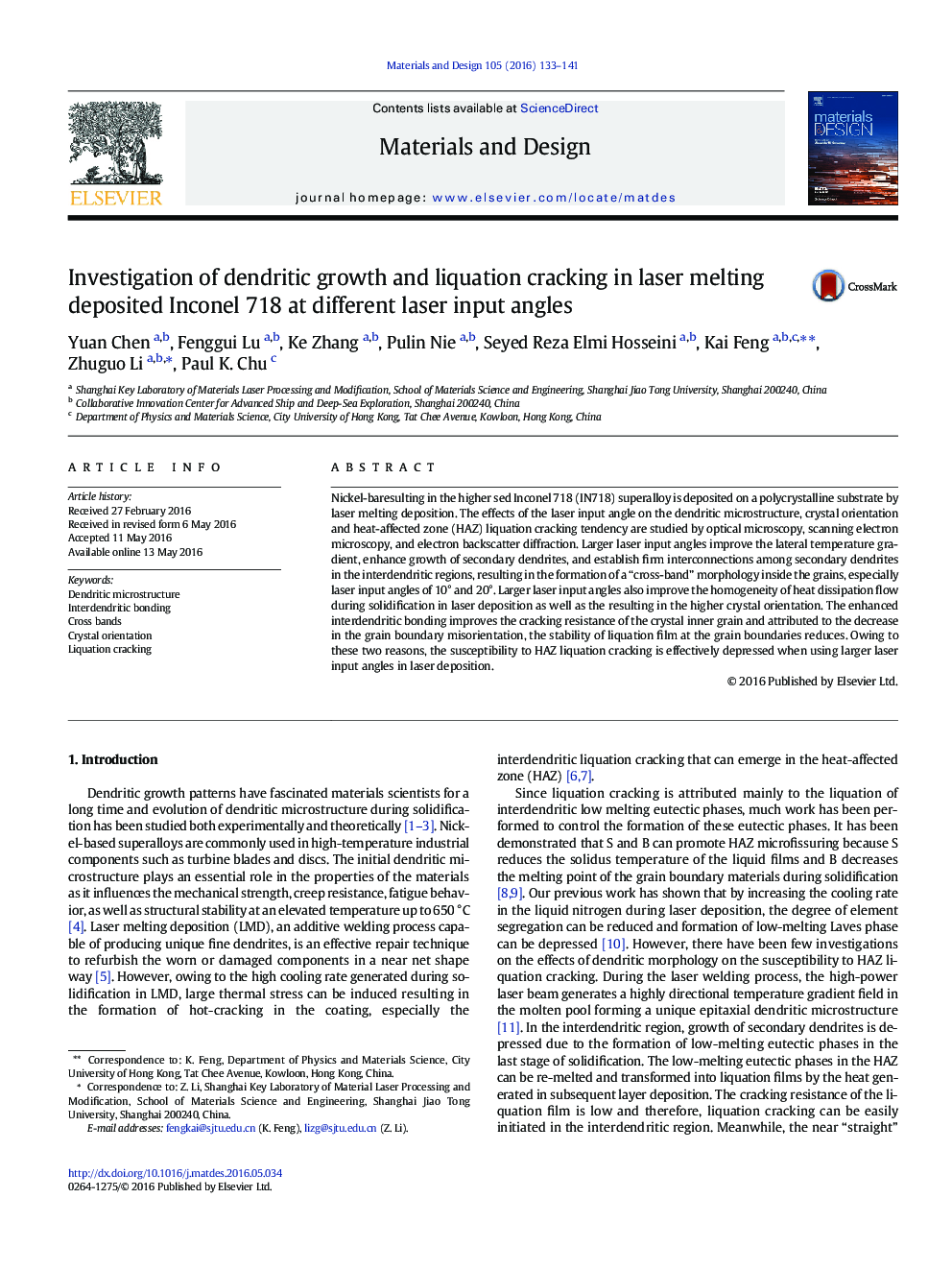| Article ID | Journal | Published Year | Pages | File Type |
|---|---|---|---|---|
| 827824 | Materials & Design | 2016 | 9 Pages |
•IN718 clads were fabricated at laser input angles of 0°, 10°, 20° and 30°.•The tilt of laser input angle increased the interdendritic bonding inner grain.•Dendritic growth from 〈001〉 to 〈100〉 was generated at laser input angle of 20°.•The crystal orientation was increased at laser input angles of 10°–20°.•The tilt of laser input angle depressed the formation of HAZ liquation cracks.
Nickel-baresulting in the higher sed Inconel 718 (IN718) superalloy is deposited on a polycrystalline substrate by laser melting deposition. The effects of the laser input angle on the dendritic microstructure, crystal orientation and heat-affected zone (HAZ) liquation cracking tendency are studied by optical microscopy, scanning electron microscopy, and electron backscatter diffraction. Larger laser input angles improve the lateral temperature gradient, enhance growth of secondary dendrites, and establish firm interconnections among secondary dendrites in the interdendritic regions, resulting in the formation of a “cross-band” morphology inside the grains, especially laser input angles of 10° and 20°. Larger laser input angles also improve the homogeneity of heat dissipation flow during solidification in laser deposition as well as the resulting in the higher crystal orientation. The enhanced interdendritic bonding improves the cracking resistance of the crystal inner grain and attributed to the decrease in the grain boundary misorientation, the stability of liquation film at the grain boundaries reduces. Owing to these two reasons, the susceptibility to HAZ liquation cracking is effectively depressed when using larger laser input angles in laser deposition.
Graphical abstractFigure optionsDownload full-size imageDownload as PowerPoint slide
